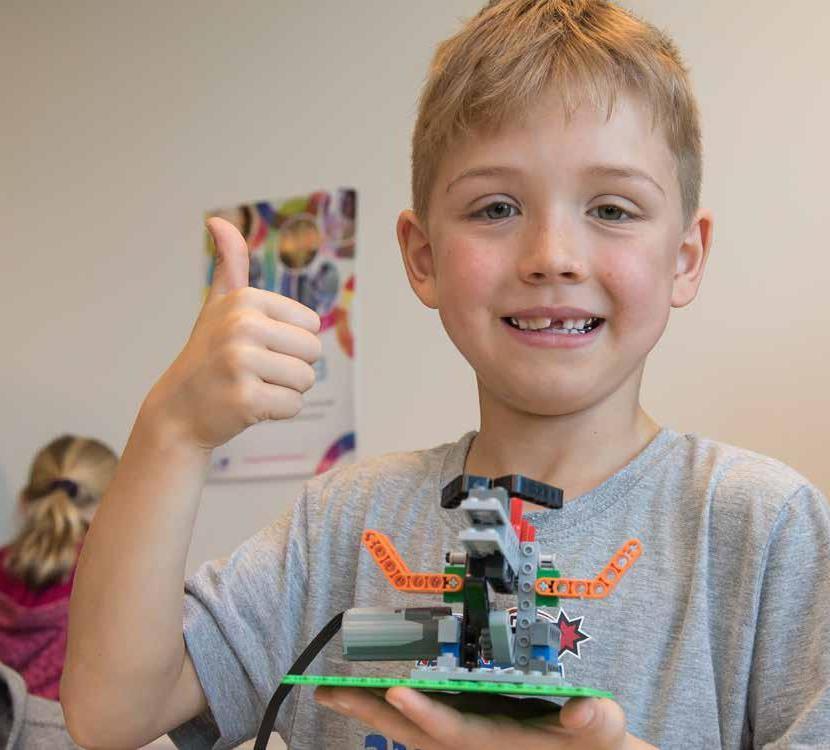
5 minute read
Municipal Public Health and Wellbeing Plan
from Council Plan 2021-25
by hobsonsbaycc
MUNICIPAL PUBLIC HEALTH AND WELLBEING
Council has a role in creating an environment which supports the health and wellbeing of the local community. In reviewing health and wellbeing data, through the broader Council Plan and stakeholder consultations, four health and wellbeing priorities were identified. Council has also given regard to the health and wellbeing priority areas outlined in the Victorian Public Health and Wellbeing Plan 2019-2023.
The health and wellbeing priorities are integrated throughout the Council Plan and are identified with icons.
ACTIVE LIVING
WHAT WE KNOW
By moving more and sitting less we reduce the risk of ill health. Hobsons Bay has a higher percentage of overweight and obese population compared to the Western Metropolitan Area and the majority of residents travel using a private vehicle. The quality, access and safety of public infrastructure in the built and natural environments can provide support and encourage residents to enjoy a more active lifestyle.
WHAT WE HEARD
Residents value pedestrian and cycling infrastructure, recreational spaces, amenities for a more active lifestyle and funding for community groups.
COUNCIL’S ROLE
Council can plan, develop and manage the connectivity, crossings and use of local roads and paths, as well as design of public spaces to encourage more active living. However Council does not have jurisdiction on all roads and public spaces and therefore must work with other levels of government and agencies to influence areas beyond Council’s control.
TACKLING CLIMATE CHANGE AND ITS IMPACT ON HEALTH
WHAT WE KNOW
In Victoria, average annual temperatures are set to increase, with predictions of double the number of hot days, a rise in sea level and more intense rainfall by 2050. Extreme weather events, worsened air quality and greenhouse emissions not only damage our infrastructure and environments but can impact health and wellbeing. Some populations experience greater vulnerability to the impacts of climate change, including (but not limited to) people with disability, older people and people in lower socioeconomic conditions. Council declared a climate change emergency in 2019.
WHAT WE HEARD
Residents want greenhouse emissions reduced, the impacts of sea level rise addressed and more community education. Residents value trees and quality green open spaces.
COUNCIL’S ROLE
Council has a role in managing its resources, facilities, services and urban planning to improve sustainability and increase the resilience of the community. Council advocates and works in partnership with the community, agencies and other levels of government to plan, adapt and mitigate the impacts of climate change.
INCREASING PARTICIPATION IN THE COMMUNITY
WHAT WE KNOW
The Hobsons Bay community is diverse in age, gender, sex, sexuality, abilities, language and faiths. A socially cohesive and inclusive community supports people to participate in the community. Some priority populations experience poorer health and wellbeing outcomes due to disadvantage and therefore require targeted responses.* Volunteering and employment opportunities are also protective factors for positive health and wellbeing. Unemployment is unevenly distributed across the municipality being highest in Altona North, Brooklyn, Laverton and Altona Meadows.
WHAT WE HEARD
Residents value opportunities, programs, events and services for all members of our diverse community throughout all stages of life. They care about volunteering and want more job creation and employment opportunities.
COUNCIL’S ROLE
Council can facilitate opportunities for the community to participate in the services, events and programs Council delivers, as well as partnering and connecting community to relevant agencies.
*as identified in Council’s social policy A Fair Hobsons Bay for All 2019-23. The Policy aims to promote equitable social and wellbeing outcomes for priority populations. It is one of the implementation mechanisms for the health and wellbeing actions captured in this Council Plan.
A SAFE, HEALTHY AND EQUITABLE SOCIETY
WHAT WE KNOW
A safe society is about feeling safe at home, in the street and at work. It reflects our quality of life and our capacity to access personal, social and economic opportunities without fear or hindrance from crime and antisocial behaviour. Local statistics and national trends indicate a need to address family violence, with women disproportionally affected in family incidents. A healthy and equitable society is about addressing social disadvantage and inequitable access to basic health and wellbeing needs, such as housing and services.
WHAT WE HEARD
Residents care about community safety in public spaces, affordable housing and supporting people in low socioeconomic circumstances.
COUNCIL’S ROLE
Council can improve the perception of safety through activation of spaces. Council has a role in addressing gender equality in the workplace and in the community through its policies, programs and services. Council delivers services to the community and acts as a community connector to other services. Council seeks to partner with agencies to raise awareness and to advocate for better access to local services and supports. Through planning and advocacy, Council can also have an influence on access to affordable housing.
WORKING WITH STAKEHOLDERS
Community health and wellbeing are complex issues that require partnerships. Local and regional public health and wellbeing stakeholders play a vital role in providing complementary services and supports directly to the community, being a conduit for Council to connect with community, and often act as a platform for advocacy on behalf of or with the community. Council will continue to work with the Department of Families, Fairness and Housing, Department of Health, and health and wellbeing stakeholders through a range of strategic networks (for example Preventing Violence Together Partnership and Western Region Primary Prevention Taskforce). Council will explore future opportunities identified through the stakeholder consultation process. This includes (but not limited to) joint advocacy or funding submissions; sharing knowledge; promotion of local services and programs; provision of community spaces and facilities; community funding; and continued participation in key networks. External data sources on longer term changes in local health and wellbeing status will continue to be monitored to inform partnership efforts.










